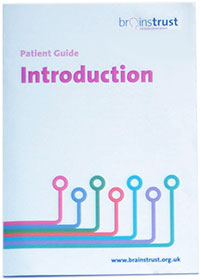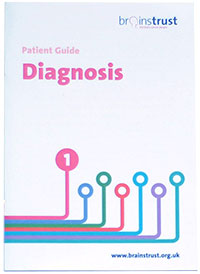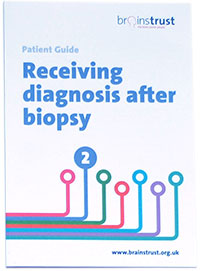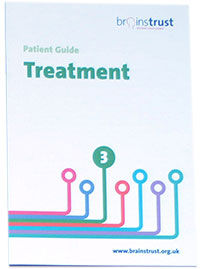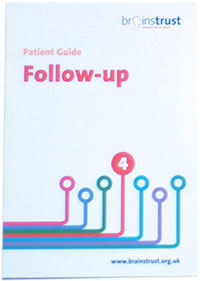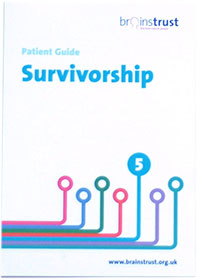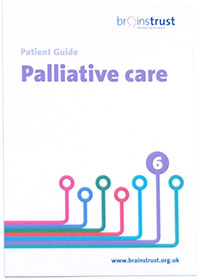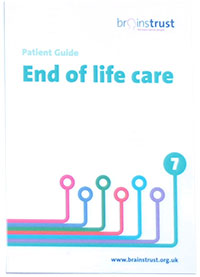brainstrust has published the first comprehensive, easy to understand guide to the adult brain tumour care pathway, to help you know what to expect and to feel more in control on your journey.
A new guide to patient care – your pathway explained

Written alongside esteemed clinicians and expert patients and carers, and in accordance with NHS England’s Information Standard, this guide will prove invaluable to people on the bewildering journey that comes with having a brain tumour.
The guide is based on the NHS and National Institute for Health and Clinical Excellence (NICE) 2006 Improving Outcomes Guidance (or IOG) to help patients and carers understand:
- What happens at each point in the brain tumour pathway (i.e. diagnosis, treatment, follow up care).
- What the optimum standard of care is (according to the NHS and the IOG) at each point of the pathway.
- What else brainstrust thinks you can expect – to help you make the most of the resources around you.
- Suggested questions you can ask clinicians (but only if you want to).
- What brainstrust can do to help.
The Brain Tumour Patient Guide is written in eight easy to understand sections, to be used individually or as a complete set. It will be particularly useful to patients and carers before they embark on each stage of their journey.
Consultant Neurologist, Robin Grant, says, “The most important factor that helps people keep control over their life when brain cancer strikes, is knowledge – an understanding of what is going to happen, when it is going to happen and why it is going to happen in a simple understandable way. brainstrust has set the knowledge standard in this area.”
Helen Bulbeck, Director of Services for brainstrust, says, “The brain tumour journey has been too confusing for too long. There’s a lot that needs to happen once you are told you have a brain tumour, and this guide will help patients and carers to feel a little less lost and alone on this journey. This is not a journey which anyone chooses to be on so anything we can do to make the going a little easier is welcome, whether it’s for patients, their carers or their clinicians. We know that the fight can be so much harder than the diagnosis – this resource will go some way towards to helping with this ”
Getting hold of the brain tumour patient guide
The brain tumour patient guide is freely available to brain tumour patients and doctors and nurses working in relevant specialties.
Click the images below to download sections of the guide relevant to you:
To find out more or to request a printed copy of the Brain Tumour Patient Guide (limited numbers), email hello@brainstrust.org.uk or call us on 01983 292405

